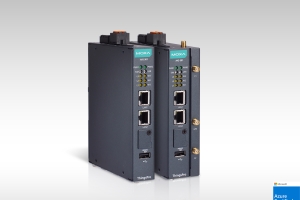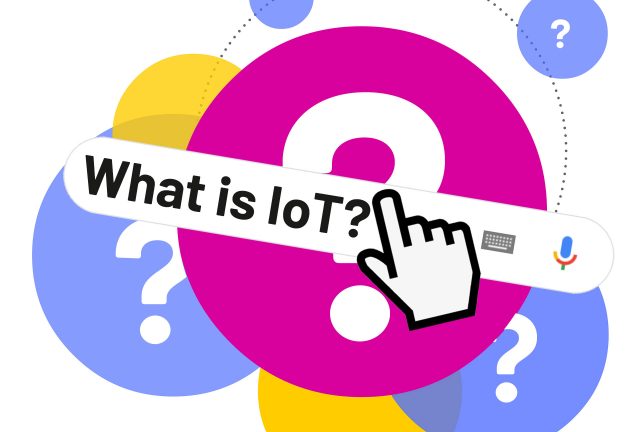OTA
Cellular connectivity complexity hampers global enterprise IoT
Among the countless surveys covering the IoT ecosystem today, many will highlight how customers experience challenges related to connectivity for their deployments and that these challenges often result in the projects’ failure. Kaleido Intelligence felt that this particular area needed to be addressed. The result of this was the largest enterprise survey to date, with
Read moreMemfault adds embedded Linux to IoT device reliability platform
San Francisco, United States – Memfault, a provider of IoT reliability platform, has announced its platform includes full support for embedded Linux. The expansion offers cross-platform support for RTOS, bare metal, Android, or Linux developers building on any hardware for any number of devices running any use case, anywhere.
Read moreGPS SmartSole powered by ENO ONE helps address healthcare wanderers
Wandering is a serious problem for those suffering from Alzheimer’s disease and dementia, and also affects a lot of children with autism. There are estimated to be 55 million people worldwide living with Alzheimer’s and dementia, while an estimated 1 in 68 children are diagnosed with autism. 60% of people with dementia will wander at
Read moreHow to Secure IoT in a 5G World: New approaches for innovation
5G promises to be a unified connectivity fabric that will connect virtually everything across our homes and businesses. This new generation of connectivity presents both opportunities and challenges for designing trusted services across diverse Internet of Things (IoT) requirements. Vincent Korstanje, the chief executive of Kigen, considers what is needed for a rich roadmap of
Read moreAdvanced IIoT gateways with Azure IoT edge integration for remote management at unmanned sites
When embracing the new era of the Industrial Internet of Things (IIoT), many system integrators and engineers face the critical challenge of finding a secure and reliable IIoT-gateway solution that offers regular security patches to remedy system vulnerabilities in a timely manner. Moxa’s newly launched AIG-300 Series IIoT gateways come with Azure IoT Edge integration
Read moreeSync Alliance accelerates automotive OTA development with an SDK for member companies
The eSync Alliance announces the launch of its eSync Agent SDK, a new Software Development Kit (SDK) for the eSync Over-The-Air (OTA) platform. This new SDK makes it simpler and quicker to integrate electronic control units (ECUs), smart sensors and other edge devices in a vehicle with the eSync OTA data pipeline, thereby enabling automotive OEMs and
Read moreQualcomm intros new end-to-end OTA 5G test networks ‘to drive 5G’ innovation
Qualcomm Technologies, a subsidiary of Qualcomm Inc., has expanded its 5G test networks to include new end-to-end over-the-air (OTA) configurations for both millimetre wave (mmWave) and sub-6 GHz bands.
Read more5G requires a new approach to wireless testing
5G has the potential to significantly transform our lives, says Charles Schroeder, Business and Technology fellow, National Instruments. From better business communications, to smarter homes and factories, to advances in autonomous vehicles.
Read moreAirbiquity reinforces the security and data analysis features of OTAmatic
Airbiquity, a provider in connected vehicle services, announced the latest release of OTAmatic. This version boasts new features and integrations that address many of today’s top concerns for automakers and suppliers, such as compromise-resilient security, edge data analytics, and more efficient OTA management capabilities.
Read moreFirst prototype 5G smartphone connects to Italy’s TIM network
TIM, together with Ericsson and Qualcomm Technologies Inc, reports it has completed the first 5G connection in Italy on TIM’s live network using the country’s first 5G prototype smartphone.
Read moreEseye and MikroElektronika launch AnyNet 3G-AA click in US to assist IoT developers
Eseye, a global cellular internet connectivity provider for Internet of Things (IoT) devices, and MikroElektronika, a producer and retailer of hardware and software tools for developing embedded systems, have launched their latest product for IoT developers innovating in the US.
Read moreSTPay-Boost IC combines hardware secure element with proprietary NFC-boost technology for better contactless performance
STMicroelectronics, a global semiconductor provider serving customers across the spectrum of electronics applications, and Fidesmo, the contactless-services developer and Mastercard approved global vendor,
Read moreNew Wireless Software from Silicon Labs enables Bluetooth communications with sub-GHz IoT devices
Silicon Labs has released new software options for its Wireless Gecko portfolio, enabling simultaneous sub-GHz and 2.4 GHz Bluetooth® Low Energy (LE) connectivity on a single chip. This Silicon Labs solution enables commercial and industrial IoT applications to combine long-range sub-GHz communications with Bluetooth connectivity,
Read moreUnlicenced low power M2M connections to approach 400 million by 2022, says Juniper Research
A new report from Juniper Research has found that the total number of connections leveraging an unlicenced spectrum to deliver low power M2M connectivity will approach 400 million by 2022. Connections using these technologies, such as Sigfox, LoRa and Ingenu, will rise from an estimated 50 million by the end of 2018, representing total growth of 736%.
Read moreOver-the-air firmware: The critical driver of IoT success
In the early days of IoT, updating remote devices often caused intermittent disruption and performance degradation. As IoT platforms have matured, they have embraced a novel way to remotely and reliably update connected devices with little to no disruption: over-the-air (OTA) firmware updates.
Read moreInternet of Things: it’s time to safeguard our future
Artificial Intelligence (AI) and the Internet of Things (IoT) are set to revolutionise the way we live, work and play. Everyday items in the home will be connected in unprecedented ways and tasks traditionally carried out by humans will be replaced by automation and robotics.
Read more
















